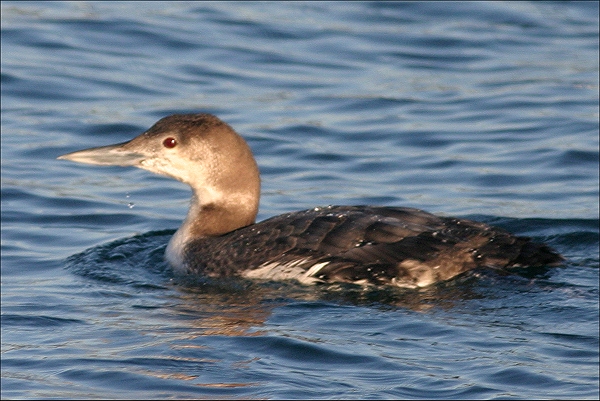
Location: San Diego Bay, San Diego, CA
Date: 2004-02-08
Lens: Canon 400mm F5.6

 Common Loon
Gavia immer
Common Loon
Gavia immer
 Description
DescriptionThe naturalist John Muir, who knew the Common Loon during his early years in Wisconsin, described its call as "one of the wildest and most striking of all the wilderness sounds, a strange, sad, mournful, unearthly cry, half laughing, half wailing". Expert divers, loons have eyes that can focus both in air and under water and nearly solid bones that make them heavier than many other birds; they are able to concentrate oxygen in their leg muscles to sustain them during the strenuous paddling that can take them as far as 200 feet (60 meters) below the surface. Their principal food is fish, but they also eat shellfish, frogs, and aquatic insects. In recent decades, acid rain has sterilized many lakes where these birds formerly bred, and their numbers are declining.
General: Sexes similar. Reddish eye. Large straight bill tapers to a point. 28 to 36 inches in length.
Adult Alternate: Black bill, head, and neck. The neck has white bands. Black back with white spots. White chest and belly.
Adult Basic: Dark gray-brown crown, forehead, hindneck and upperparts. White face, eye ring, throat and underparts. Pale gray bill. Jagged border between white foreneck and dark hindneck.
Immature: Similar to adult basic, but with paler bill and white scalloping on the back.
Winters on coastal bays and the ocean. Nests on forested lakes and rivers.
 Nesting
Nesting2 olive-brown or greenish eggs with light spotting. The eggs have a 26-31 day incubation period. Fledging occurs in 75-80 days. The nest is a bulky mass of vegetation usually built near the water's edge on an island.